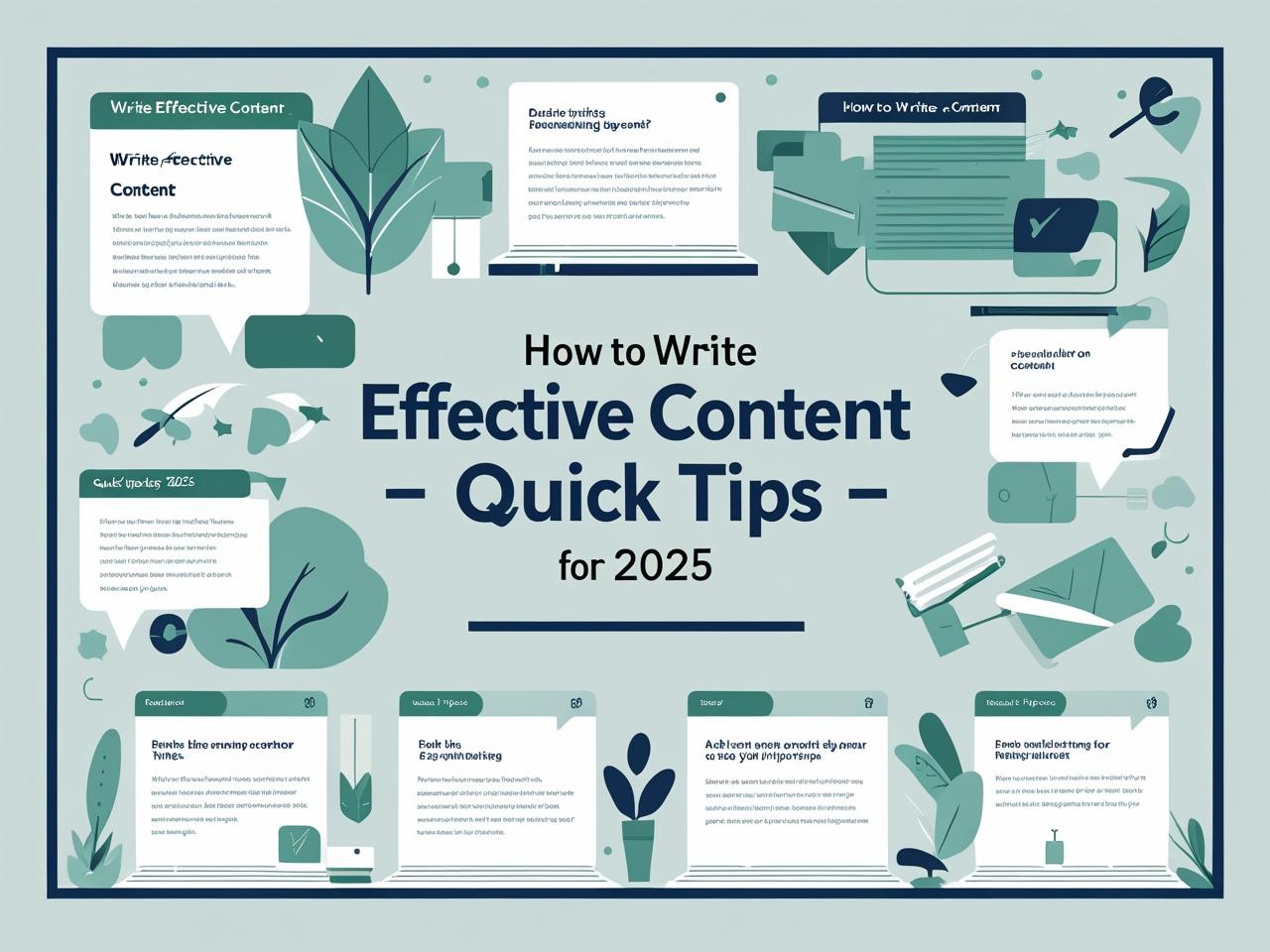How to Write Effective Content
In today’s fast-moving digital landscape, writing effective content is more important than ever. Whether you’re creating blog posts, landing pages, social media updates, or product descriptions, your ability to communicate clearly and persuasively will determine your success. The best content doesn’t just inform — it engages, ranks well on search engines, and drives action.
But with the rise of AI-generated writing and content saturation, standing out has become harder. This guide will walk you through quick yet powerful tips to help you write high-impact content that’s optimized for SEO, resonates with your audience, and feels genuinely humanized.
Let’s explore how to write content that performs — and converts.
1. Know Your Audience First
Before writing a single word, understand who you’re writing for:
- What are their pain points?
- What do they care about?
- What tone do they respond to?
When you tailor your content to your audience’s needs and emotions, you’ll automatically sound more authentic. For example, writing for college students will sound different than writing for SaaS buyers or retirees.
Quick Tip: Create a simple audience persona including age, goals, and common challenges.
2. Start With a Strong Hook
The first few sentences of your content are crucial. That’s your chance to grab attention and entice readers to continue.
How to craft a strong opening:
- Ask a thought-provoking question
- Share a surprising fact or statistic
- Address a common struggle
Avoid generic openings like “In today’s world…” and instead get specific fast.
3. Humanize Your Writing
With the explosion of AI writing tools like ChatGPT and Gemini, a lot of content on the internet sounds robotic or overly formal. To make your writing stand out, humanize it.
How to Humanize Content:
- Use contractions (e.g., “you’re,” “they’re”)
- Write in an active voice
- Add personal examples or opinions
- Use everyday language
If you’re using AI tools to assist with content creation, make sure to rewrite the results in your own tone. Use a tool like GPT Tool Pro’s AI Humanizer to help turn machine-sounding text into authentic, readable writing.
4. Focus on One Idea Per Paragraph
Clear content is easy to read. Each paragraph should contain a single main idea. Break down complex topics into short, digestible blocks.
Do this:
✅ AI content detection is useful in schools. It helps identify if a student used a chatbot to write their paper.Avoid this:
❌ AI tools are popular and also used in schools and marketing and sometimes legal work too.5. Use Subheadings to Break Up Content
Readers often scan content before reading it fully. Use clear, descriptive subheadings (H2, H3, etc.) to guide them.
Not only does this improve readability, but it also helps with SEO by signaling topic relevance to search engines.
Bonus: Use target keywords or secondary phrases like “content strategy,” “human writing,” or “SEO tips” in your subheadings.
6. Write with SEO in Mind (But Don’t Overdo It)
SEO helps your content rank — but stuffing keywords is a bad idea. Instead, focus on naturally including your primary and secondary keywords, like:
- how to write content
- write effective content
- humanize AI writing
- content optimization
- readable blog posts
Use keywords in:
- Page title
- Meta description
- Headings
- First 100 words
- Image alt-text (if applicable)
Tools like Yoast or RankMath can help, but writing for people should always come first.
7.
Be Clear and ConciseAvoid fluff, jargon, or unnecessary complexity. Good content is simple, clear, and useful.
Before:
“Due to the increasing proliferation of artificial intelligence tools within the content marketing ecosystem, it becomes imperative to consider best practices…”
After:
“AI tools are everywhere. To use them well, you need a smart content strategy.”
8. Use Examples, Stats, and Real Data
Back up your points with evidence. It makes your writing more credible and keeps readers engaged.
Examples:
- Quote expert insights
- Reference case studies
- Link to research reports or survey results
This also boosts your authority, which helps with SEO and trust.
9. Include a Clear Call to Action (CTA)
Every piece of content should guide the reader toward a next step:
- Sign up for a newsletter
- Try your tool (like an AI Humanizer)
- Read a related article
- Leave a comment
Without a CTA, even the best content feels incomplete.
10. Edit Ruthlessly
Great writing is in the editing. Once your draft is complete:
- Remove repetition
- Shorten long sentences
- Fix grammar and punctuation
- Use tools like Grammarly, Hemingway App, or GPT Tool Pro’s editor
Quick Tip: Read your content out loud — if it sounds awkward, rewrite it.
Bonus: Use Visuals to Enhance Content
Images, infographics, and visual tools like content flowcharts or quote boxes help explain complex ideas and break up long text.
Pro Tip: Visuals should always support the content, not distract from it. Don’t forget to add alt-text for accessibility.
Recap – Quick Checklist for Writing Effective Content
✅ Know your audience
✅ Open with a hook
✅ Humanize your tone
✅ One idea per paragraph
✅ Use headings and subheadings
✅ Sprinkle in SEO keywords
✅ Be clear and concise
✅ Add stats and examples
✅ End with a CTA
✅ Always edit and polish
Final Thoughts
Writing effective content isn’t about using fancy words or stuffing in keywords — it’s about connecting with real people. Whether you’re blogging, selling, educating, or sharing your experience, content that feels real and helpful will always win.
In 2025 and beyond, with AI tools at your side, the real skill will be knowing how to humanize your message. With the help of tools like GPT Tool Pro, you can not only generate content faster but also refine it to sound more natural and trustworthy.

